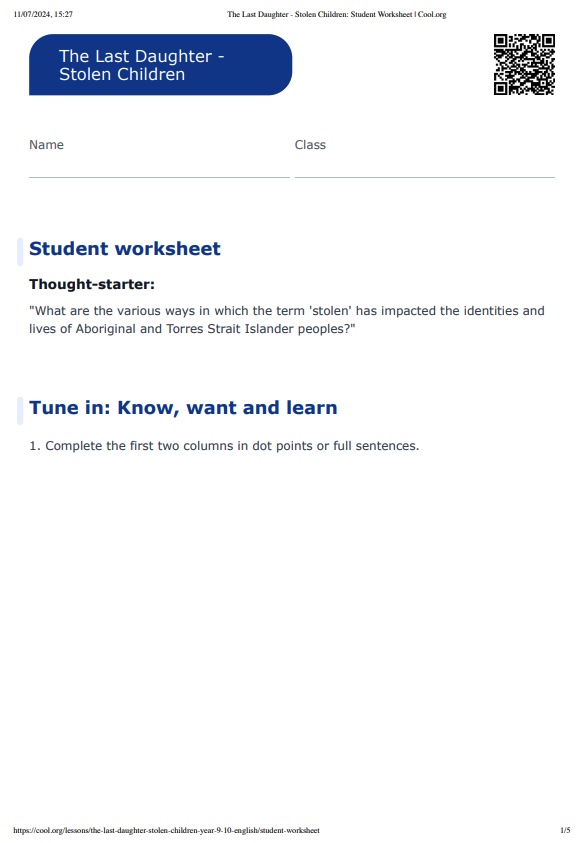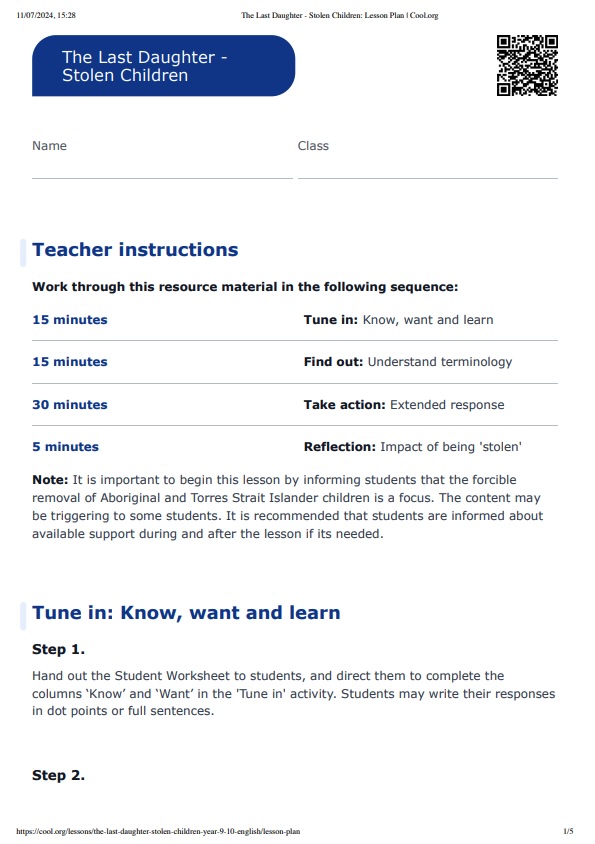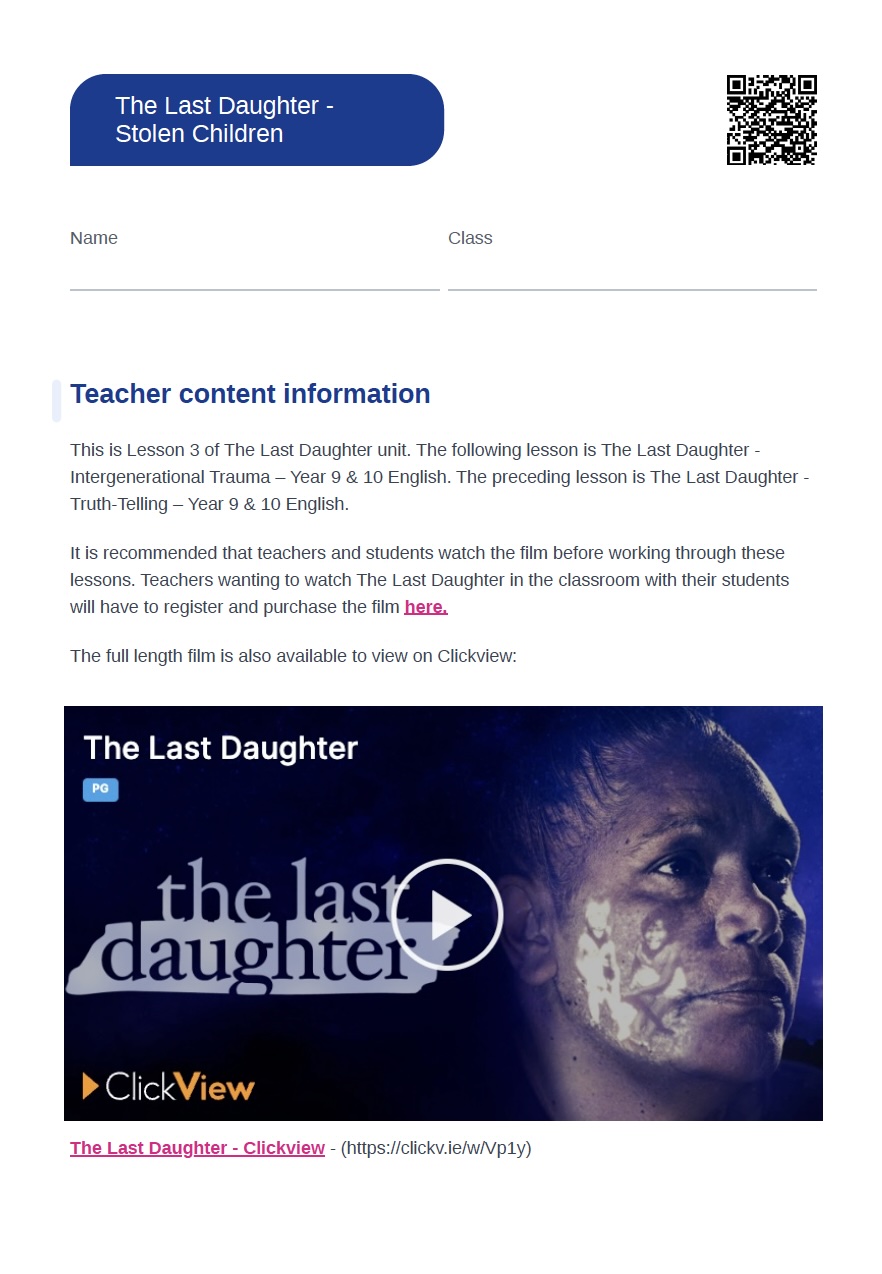Lesson summary
The Stolen Generations resulted in the forcible removal of tens of thousands of Aboriginal and Torres Strait Islander children from their families for the purposes of assimilating them to absorb the ideals of European society. In The Last Daughter, Brenda Matthews explains that she and her siblings were removed from their parents after the NSW Assimilation Policy was abolished; they were still stolen, while not technically part of the ‘Stolen Generation’. In this lesson, students learn more about this complex situation and explore its various impacts on the identities of those affected.
Learning intentions:
Students will...
- understand government policies and their impact on Aboriginal and Torres Strait Islander peoples
- explore how the text represents the experiences and perspectives of those who were forcibly removed from their families.
Success criteria:
Students can...
- identify and explain how government policies impacted Aboriginal and Torres Strait Islander peoples
- explain how the text represents those who were forcibly removed from their families.
Lesson guides and printables
Curriculum links
Select your curriculum from the options below.
Lesson details
Curriculum mapping
Australian Curriculum (v9.0) content descriptions:
English:
Students learn to:
- analyse and evaluate how people, places, events and concepts are represented in texts and reflect contexts (AC9E10LY01).
- understand how language use can have inclusive and exclusive social effects, and can empower or disempower people (AC9E10LA01).
General capabilities: Literacy, Personal and Social Capability, Intercultural Understanding, Critical and Creative Thinking
Syllabus outcomes: EN5-5C, EN5-8D
Cross-curriculum priority: Aboriginal and Torres Strait Islander Histories and Cultures.
Relevant parts of Year 9 & 10 English achievement standards:
Students interact with others, and listen to and create spoken and multimodal texts including literary texts. They analyse and evaluate representations of people, places, events and concepts, and how interpretations of these may be influenced by readers and viewers.
Resources required
- Access to The Last Daughter
- Device capable of presenting audio and video to the class
- Student laptops or access to schools’ devices (laptops, iPads etc)
- Student Worksheets - one copy per student.
- Writing materials
Skills
This lesson is designed to build students’ competencies in the following skills:
- communication
- critical thinking
- cultural understanding
- empathy
- social skills
Additional info
Teachers wanting to watch The Last Daughter in the classroom with their students can register and purchase the film here.
The film is also available to view on Clickview.
Level of teacher scaffolding: Medium - facilitate class discussion, read provided material to class.
Australians Together is a not-for-profit organisation that brings together non-Indigenous and First Nations staff, consultants and collaborators located across Australia. Their mission is to help non-Indigenous Australians listen and learn from First Nations people. Building a greater awareness of our shared history and its ongoing impact, gain a deeper respect for First Nations perspectives, and help pave the way for meaningful actions for an Australia together. You can learn more about Australians Together and their Learning Framework here.
Related professional learning
How to Teach Critical Thinking - Secondary
Quick summary: This course will help you to view the world with a more critical eye by introspectively exploring your own biases of thinking.




Welcome back!
Don't have an account yet?
Log in with:
Create your free Cool.org account.
Many of our resources are free, with an option to upgrade to Cool+ for premium content.
Already have an account?
Sign up with:
By signing up you accept Cool.org's Terms and Conditions(Opens in new tab) and Privacy Policy(Opens in new tab).